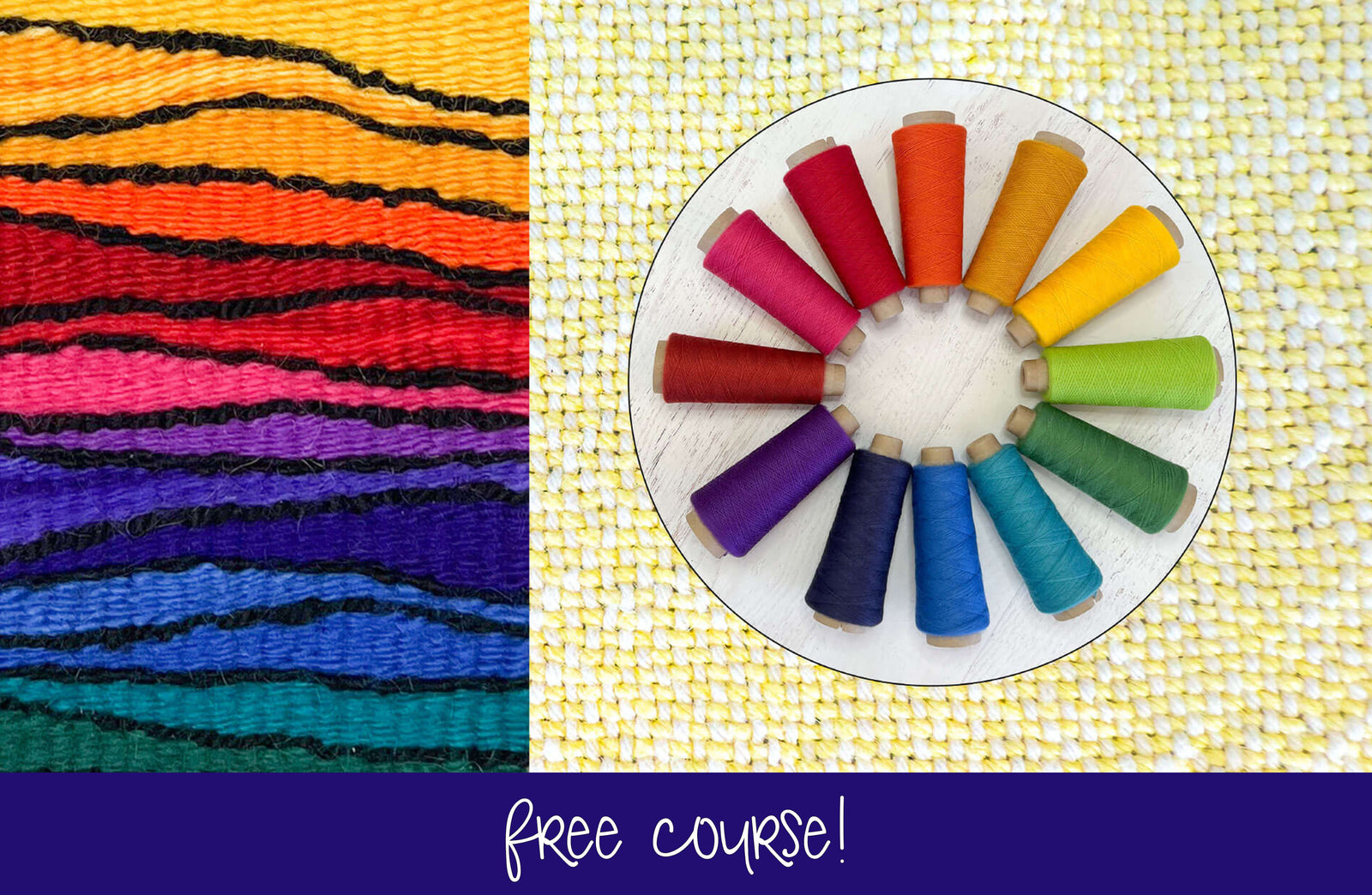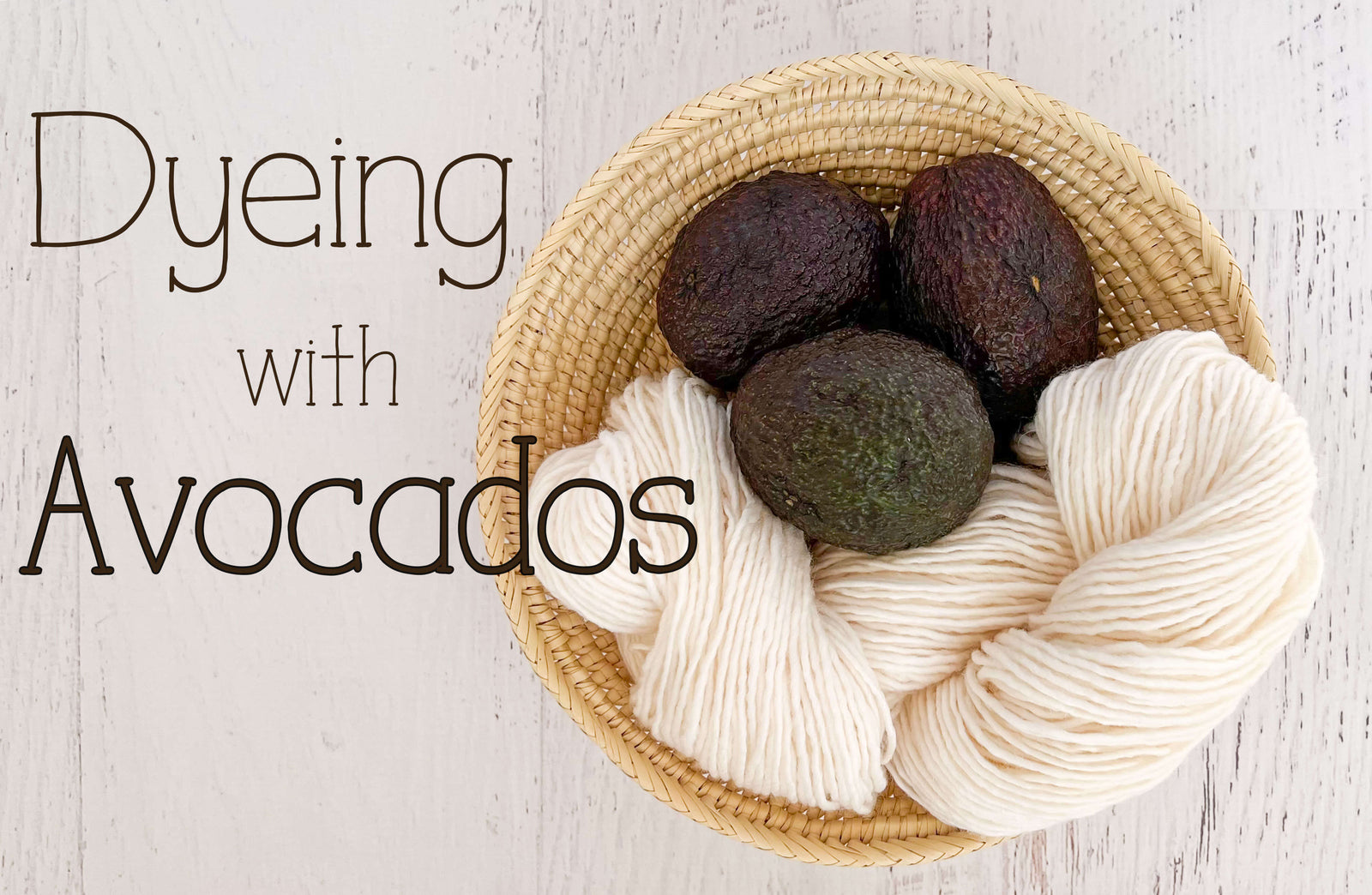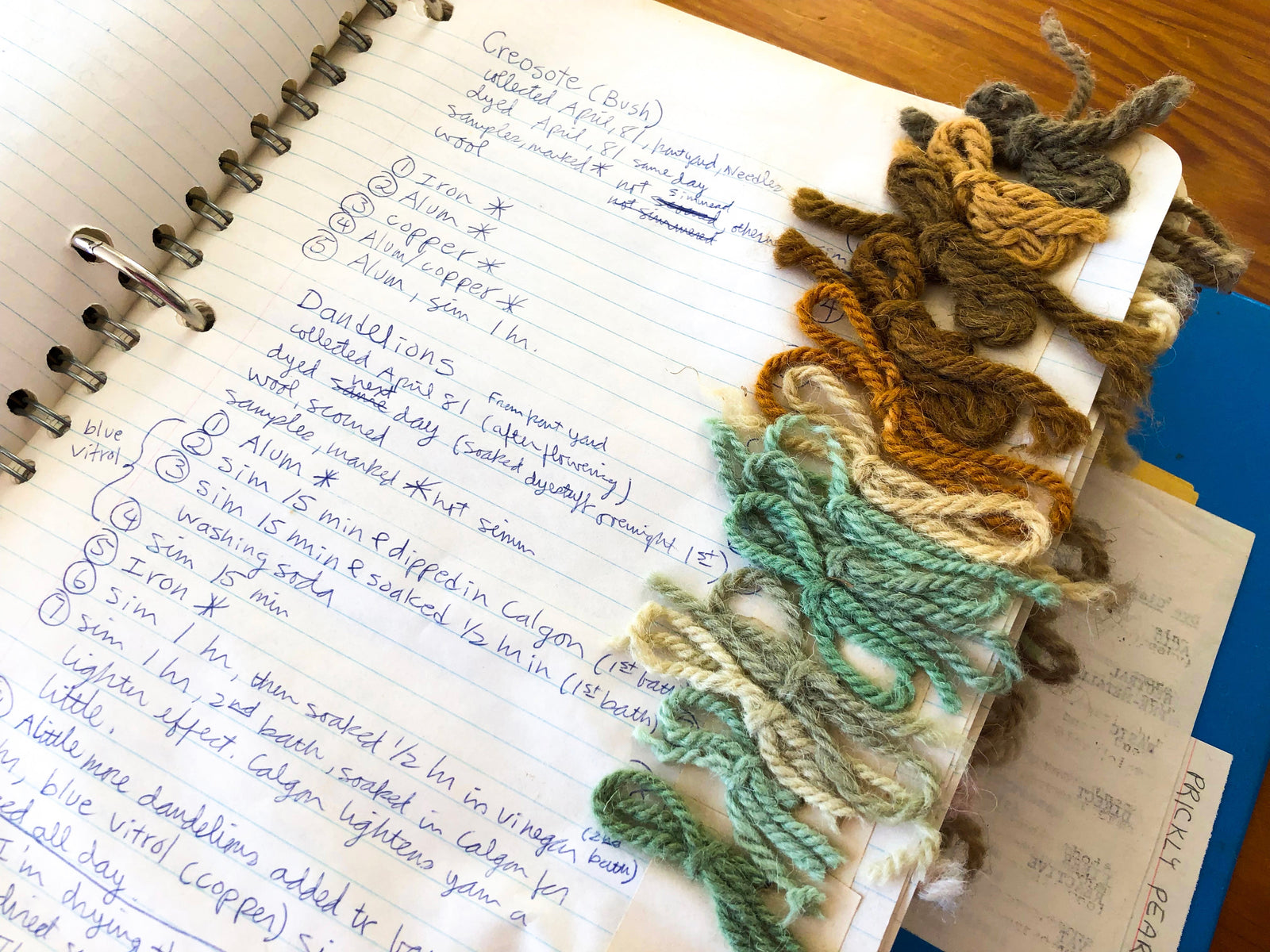Want to give natural dyeing a try? Start with tea - you probably have everything you need in your cupboard right now.
I'm going to show you how I dyed wool with tea - If you're looking for an easy and fun approach to dyeing, this one is for you!
I'm updating my Naturals Weaving Kit and the new kit will feature tea-dyed wool. So I'm dyeing up a big load.
You can do the same process with just a small skein.
Just remember to have fun!

Prepare the Yarn for Dyeing
To start, the yarn needs to be prepared for dyeing. My yarn came on cones, so I had to reel it off to create hanks of yarn. My father made this for me when I was first learning all of this fiber art stuff, it's called a skein reel.

If you don't have a skein reeler, you can just wrap the yarn around your hand and elbow, or this video shows you how to wind the yarn between two chairs.
You don't want to wind on too much yarn, it's hard to handle hanks that are too large. When they're soaked they can be heavy!
After winding, I cut the yarn and tied the two ends together. Then I tied the hank in three different places. The ties should be loose so the yarn is free to soak up the dye evenly, but not so loose that the yarn gets all tangled up. Mine usually get all tangled up anyway.


The yarn was all ready to go, but before I started the dyeing process, I needed to scour the wool. When you scour the yarn, make sure the water is nice and warm. If it's too hot the wool could felt up. I always think, "Would I want to jump into this and take a bath?" If the water feels nice to us, then it probably feels nice to the wool too.
Don't ever run water directly over the wool, always fill the sink, then add the wool gently. 

Time For Mordant
While the wool was soaking, I prepared the mordant. The mordant is what makes the dye stay in the fabric, otherwise the dye might just wash away. Unless of course, it's a stain you want to wash away, then it will stay forever.
I used alum, you can get it at the grocery store in the spice section. Alum is gentle and safe, so it's good for kitchen dyeing.
Use six tablespoons of alum for each pound of yarn.
I probably could have gotten away with no mordant, because black tea has tannin, which is also a mordant that sets the dye.
When dyeing, natural or chemical, I keep the utensils I use separate from the ones I use for food. Don't mix dyeing with eating!
After scouring, you're supposed to simmer the wool in the alum for an hour. It was a hot day, and I had too much yarn for the stovetop, so I just soaked the wool in alum for a few hours.

Prepare the Dyebath
I bought a two-pound bag of the most inexpensive loose-leaf tea I could find.
I didn't want it to float around in the dyepot willy-nilly so I divided it in two and wrapped each one up in a thin cotton towel and tied it with a string.


Then the bags went into the dyepot to simmer.

If you're looking for an exact recipe, this isn't the place to find it because I dye like I cook.
I'm careful when it matters, and have fun when it doesn't. at least it doesn't matter to me.
I don't keep exact records to replicate what I've done when I'm natural dyeing. I do that enough everywhere else in my life so I'm on vacation here.
That's why I decided to throw in some extra tea bags - They weren't my favorite brand - so who knows how old they were and they needed using up.
And I decided to add some instant tea - no I don't drink that foul stuff, I got it at the store just for this project. It didn't seem to have any weird chemicals that made it be instant, so I thought I'd give it a try.
Sun Tea
I grew up in the desert, and we'd often make "sun-tea." We'd put a few tea bags in a big glass jar and let it brew in the sunshine all day.
Since I didn't have a dyepot big enough to hold all of my wool, I decided to make sun-tea wool.
After simmering, I poured the tea into a big plastic bin and added some more warm tap water, remembering that the water can't be too hot for the wool.
I gently placed the wool into the bin, and put the big and little teabags in too. Then I dragged the bin onto the edge of my porch and left it to "cook" in the sun.
Every few hours I would smoosh the yarn around to keep the dye even, and the dyebath always felt nice and warm/hot.
I live in Arizona, so solar dyeing just made sense, and it actually was the summer solstice, so that helped my dyeing process even more!

Finishing Up
I let the wool soak for a couple of days, then rinsed it out.
I forgot to take pictures of my rinsing process. Sorry. It pretty much looked like my scouring step, just no detergent.
And there were lots of rinsings. Since I have such hard tap water, I added a little softener to the second-to-last rinse.
And hung it out to dry.
As you can see, I wound too much yarn on some of the skeins. And I paid for it, they were heavy to handle and tangled up, too. So don't be like me.

It's ready for the Naturals Weaving Kit!









